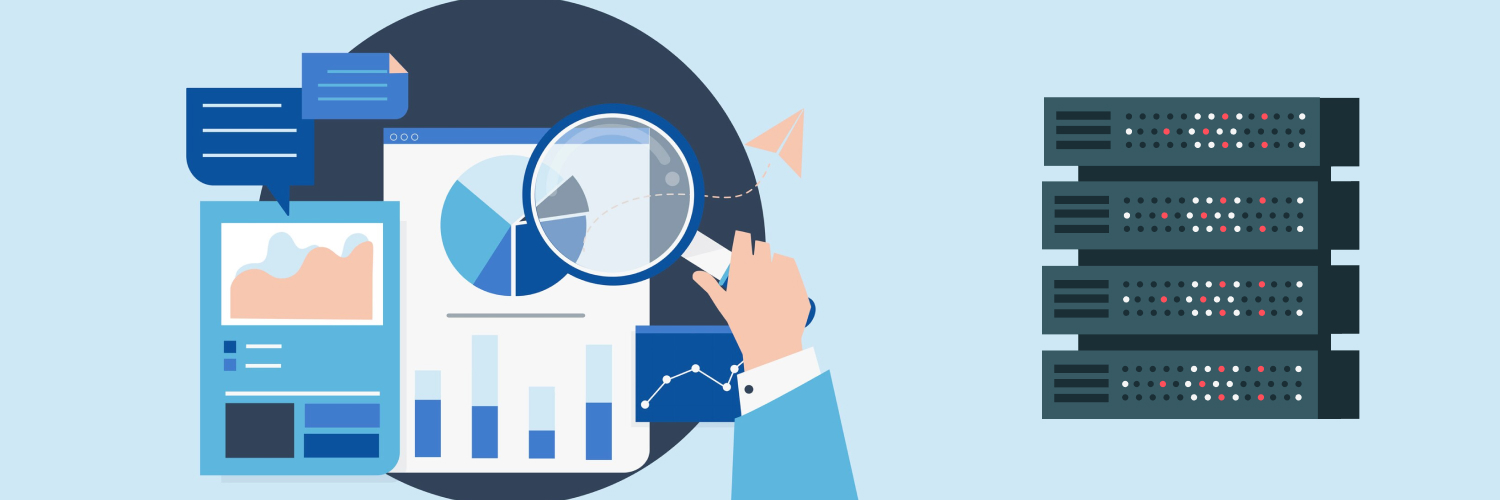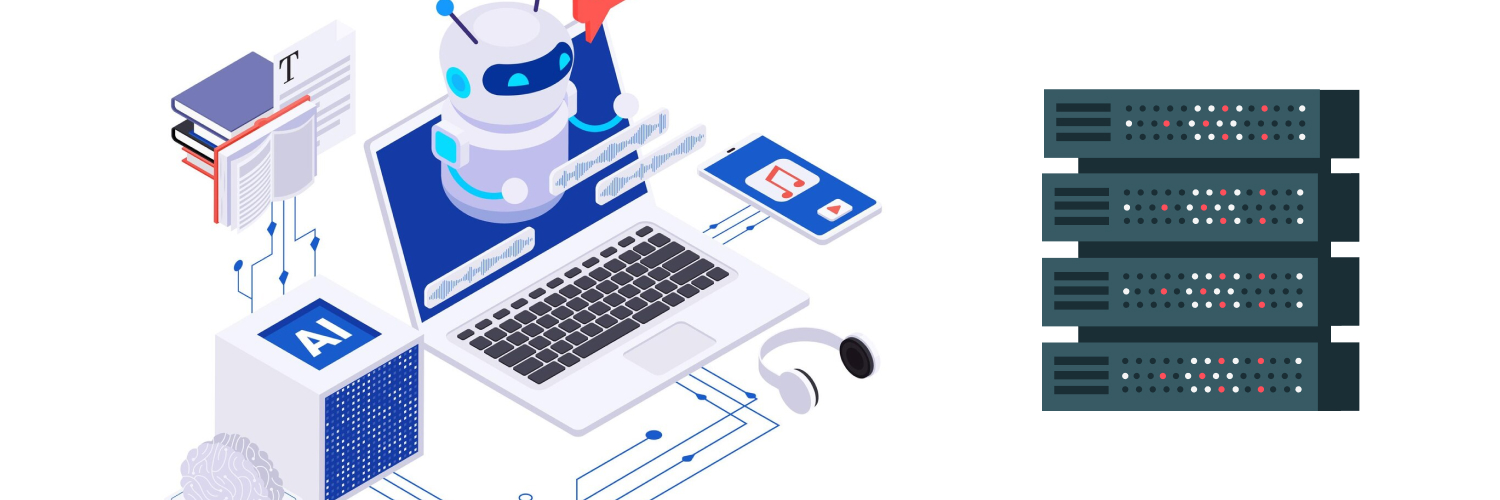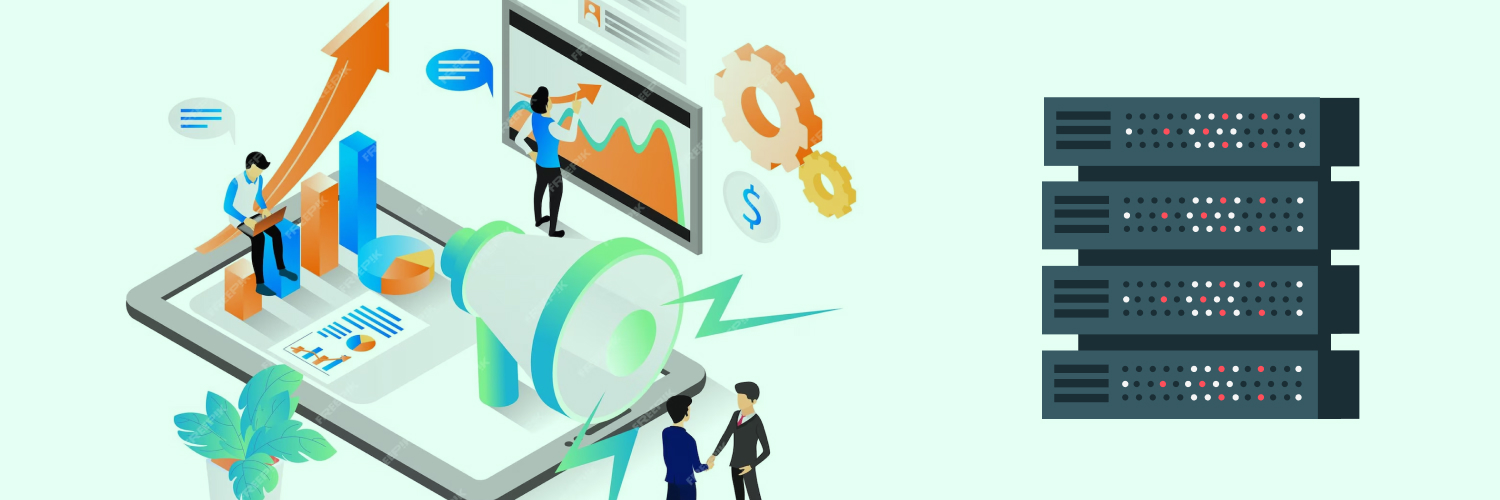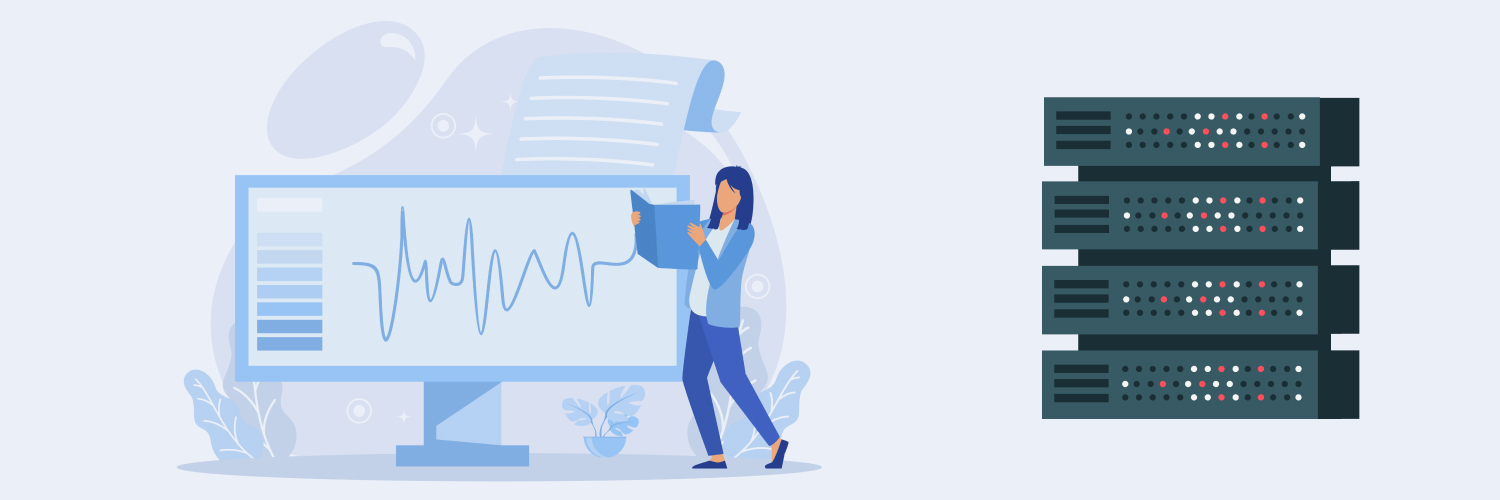Data Extraction Tools: How To Extract Data Ethically
According to WeForum, there were 44 zettabytes of data worldwide in 2020. If you’re trying to calculate the amount, there are 21 zeros in a zettabyte. So why do we have this astounding amount of data?
There are two primary sources of data in the world. The first includes everything we do. For example, our interactions are logged and stored every time we use the internet. It consists of the websites we visit, the searches we make, the videos we watch, and the people we communicate with. The data is then packaged and sold to businesses that further use it for marketing, price monitoring, and other purposes.
Companies generate the second source of information. It includes purchase histories, account details, click-through rates, and other interactions on business websites or apps.
While this data is often seen as a valuable commodity, it’s important to remember that it represents real people. As a result, businesses can leverage this data to make informed decisions, increase revenue, and take data-driven approaches to advertising and business expansion.
But how do businesses collect this data? That’s where data extraction tools come in. Whether it’s website data extraction or social media data extraction, these tools allow companies to collect the data they need in an automated way.
There are many data extraction tools, each with its strengths and weaknesses. Some are better suited for small-scale projects, while others can handle large-scale data collection. But what is data extraction? How do you do it? Here’s an overview of data extraction methods, tools, and uses. You can use the table of contents to skip ahead if you need to.
What Does Data Extraction Mean?

Data extraction is extracting data from sources for business purposes. It is the process of transforming data from one format to another, typically to perform some analysis on it.
The extracted data may be in a tabular format, such as a spreadsheet, or a more structured layout, such as XML. It may also be in an unstructured form, such as a text document.
Extracting data from sources can be time-consuming and error-prone, especially if the data is in a format that humans do not easily read. In addition, extracting data from some sources requires special software or scripts. Despite the challenges in extracting data, collecting data from various sources is imperative for business purposes. Forbes says that it’s all about data.
Successful enterprises extract information from data to identify target customers, run marketing campaigns, understand how products perform, and make strategic decisions. All these activities require data extraction.
Why is data extraction essential?
Businesses in a competitive market always try to outdo one another and get ahead. Therefore, they must be able to access any and all data that will give them an edge over their competitors. Data extraction allows businesses to collect data from a variety of sources so they can make better, more informed decisions.
Data extraction is also crucial for research purposes. Scientists and other researchers need to collect data from a variety of sources so they can study it and look for patterns.
Reasons for Website Data Extraction

Data extraction is a common practice in a world run by computers. The process involves taking data from a given source and copying it into another format or location for further analysis.
There are many reasons why someone might want to extract data from a given source, but some of the most common causes include the following.
Analyze data for patterns of trends
There’s no better way to find patterns and trends than to analyze data. For example, suppose a company wants to find out how many customers purchase a product after using a specific coupon code.
The company would need to extract customer purchases and coupon code data to conduct the analysis. Likewise, if the government wants to track crime rates in different states, it would need to extract data related to crimes from various sources.
Create a database
Another common reason for data extraction is creating a database. Organizations often do this when they want to centralize their data for easy access and analysis.
A university might want to create a database of all its alumni. It would have to extract data from various sources, such as transcripts and graduation records.
Generate reports
Data extraction can also be used to generate reports. For example, a company might want to create a report that contains all the information about its employees, such as their names, job titles, and salaries.
The company would use data extraction software or tools to extract data from its records. Unfortunately, manual data extraction can be pretty tedious, especially when dealing with a saturated source of information.
That’s why data extraction tools and software exist. They automate the data extraction process so you can get the data you need without going through the tedious process of extracting it manually.
Competitor analysis
A company can never rest on its laurels and must constantly strive to be the best in its field. Part of remaining the best is studying the competition and understanding what they are doing to stay ahead.
Competitor analysis helps a company determine what products and services to offer, how to price them, and what marketing strategies to use. It also helps the company understand its strengths and weaknesses compared to competitors.
There are several competitor analysis methods, but the most common is website data extraction. For example, a company can use a web scraping tool to extract data from its competitor’s website, such as pricing information, product descriptions, and marketing strategies. It can then use this information to improve the company’s products, services, and marketing efforts.
Website data extraction is a legal and ethical way to obtain information about your competition. Likewise, you can conduct social media extraction to study your competitor’s social media presence and understand their marketing strategies. By understanding what your competition is doing, you can stay one step ahead and ensure that your company remains the best in its field.
Price monitoring
When a company is trying to enter a new market or wants to understand its pricing relative to the competition, it will often monitor prices. The process involves tracking the prices of specific products over time or comparing the costs of similar products across different markets.
By understanding how prices change, companies can make better decisions about when to enter or exit a market, price their products, and adjust their strategies in response to changes in the competitive landscape.
There are different ways to approach price monitoring. You can track prices manually by regularly collecting data from stores or other sources. While this can be time-consuming and expensive, it offers the advantage of monitoring particular products and understanding how prices change over time.
You can also use online price monitoring tools, which automate collecting data from online retailers. These tools typically cost less than manual data collection and save you a lot of time.
How do you do extraction for price monitoring? It’s simple. You can instruct data extraction tools to collect data from specific retailers or get data from a wide range of retailers and filter out relevant ones. Once you have collected price data, you need to analyze it to identify trends and understand what they mean for your business.
Decision-making
The primary purpose of data extraction is to gather information from data sources to support decision-making. Data extraction can provide the necessary information whether a company wants to decide on its advertising strategy or product development.
Data extraction can also help a company track its progress over time and make necessary adjustments to its operations. For instance, if a company wants to gauge the effectiveness of its ad campaign, data extraction can provide information on how many people saw the ads and how long they viewed them. It can also tell how many people bought the company’s products and services after seeing the ad.
Types of Data Extraction

Data extraction can be categorized based on the source, technique, and method. As a result, companies use different types of data extraction services to complete their work more efficiently.
Types by source
You can extract data from emails, social media, websites, inventories, invoices, and many other sources. Here are some sources companies get data from:
Social Media
Social media has become an integral part of our lives. We share our views, pictures, and experiences on social media platforms. Organizations can use social media data extraction to get insights into their customers. They can then use this data for marketing or customer service purposes.
For example, a company can extract data from a social media site to know what people say about its brand. They may focus on a particular trending hashtag to understand the current market trends or how people feel about a specific trend.
Website
Website data extraction is one of the most common types of data extraction. It helps companies get the data they need from different websites automatically.
If a company may want to get the contact information of all the businesses in a specific area, they can use a web scraper to extract this data from different websites and save it in a spreadsheet.
Inventories
When a business manufactures products, it needs to keep track of its inventory. Inventory data extraction helps companies get accurate and up-to-date information about their inventory.
They can extract this data manually or through an automated system. Automated systems are more efficient as they can extract data from a large number of inventories in a short time.
Types by method
There are many data extraction methods and techniques. Companies can use one or many of them to extract their needed information. Here are three primary data extraction techniques:
Update notification
Update notification is the simplest way to extract data from a database table that has changed. It uses the “table_name” to identify which table to track and the “mode” to specify what type of change you are interested in: insert, update, or delete. Update notification also allows specifying conditions to filter out undesired changes.
Since the system issues a notification every time something changes, you do not miss any change in the record. In this way, you have a comprehensive framework for data collection.
Update notifications are handy when combined with SQLite’s triggers. These triggers can automatically issue update notifications whenever database changes occur.
Incremental extraction
Incremental extraction means you can only extract data that has changed since the last extraction. It is helpful when you have large data sets and want to save time by only pulling the changed data.
To do an incremental extraction, you must specify a date field in your data set. Then, when you run the extraction, it will only extract the data that has changed since the date specified in the field.
Incremental extraction is a feature of many ETL tools, and it can be helpful when you want to save time and resources.
Full extraction
Full extraction is among the extra techniques you use the first time you create your project and when you want to update the data in your project with changes made to the source data. When you run a full extraction, all the data in your project is dropped and replaced with updated data from the source.
Depending on your data, this process can take some time to complete. Suppose a company wants to collect data from a social media site. In this case, full extraction would involve downloading all of the data that meets the company’s criteria from that site.
ETL: Extract, Transform, Load
Many experts hail ETL as the most efficient method for data extraction. But what exactly is it?
ETL or “Extract, Transform, Load” involves the following three steps:
- Extract data from its current location
- Transform the data to meet the requirements of its new location
- Load the data into its new location
ETL is most commonly used in data warehousing and mining when data needs to be moved from one database to another or combined with other data. However, it can also migrate data from one format to another or cleanse and standardize data.
There are many different ETL tools, but they all work similarly. They connect to the data source, extract the data, and then load it into the destination. The transformation step can be performed using various methods, such as MapReduce or SQL. ETL is a powerful tool for managing data but has some limitations. First, it can be time-consuming and resource-intensive. Second, it can be challenging to track and troubleshoot errors.
Finally, it is not always possible to perform all three steps in one process. For example, the load step will have to be performed separately if the data needs to be transformed before it can be loaded.
How To Do Data Extraction

Since there are different types of extraction, there is no standard way of doing it. It all depends on the kind of data you want to collect and from where. Nevertheless, some common steps are followed in any data extraction process:
Step 1: Decide on the data source
Determining the data source is the first step in any data extraction process. Next, you need to decide where you want to collect your data.
For instance, if you’re a company that wants to determine if the market will welcome your new product warmly, you’ll have to extract data from social media platforms to gauge consumer sentiment about existing products.
On the other hand, if you want to analyze your customers’ purchase history, you’ll need data from your organization’s transaction records.
Step 2: Determine the format
Once you know where you want to collect your data, you need to determine the format of that data. If you want to extract data from a relational database, it will be in the form of tables. However, if you want to collect data from the web, it will mostly be in HTML format.
Knowing the data format beforehand is essential as it will help you select the right tools for extracting it.
Step 3: Select the extraction method
You can choose the data extraction methods based on the data you want to collect. Likewise, the data source will also impact your data extraction techniques.
- API: Many websites provide APIs that allow you to access their data programmatically.
- Web scraping: If a website doesn’t provide an API, you can resort to web scraping using Python or any other programming language. The method involves simulating a user’s behavior on the web and extracting data automatically.
- SQL: To extract data from a relational database, you must use SQL. It is a standard language for accessing databases.
- Data Mining: Data mining is a process of discovering patterns in large data sets. It can be used to extract data from social media platforms.
Step 4: Clean the data
After you’ve collected the data, cleaning it before any analysis is essential. Data cleaning involves removing duplicates, filling in missing values, and standardizing data. This step can impact the accuracy of your results.
Step 5: Analyze the data
Now, you can start analyzing data to extract insights. Of course, the type of analysis you do will depend on your business goals.
To introduce a new product, you’ll need to conduct a market analysis. On the other hand, if you want to improve your customer retention rate, you’ll have to analyze customer data to find trends.
Some insights you can find include:
- What are the most popular products?
- What is the customer satisfaction level?
- What are the most common complaints?
- When do people buy your product?
You can use different data analysis techniques to find answers to these questions. Some standard techniques are:
- Descriptive statistics: It involves summarizing data using central tendency and dispersion measures.
- Correlation analysis: It is used to find the relationship between two variables.
- Regression analysis: You can employ it to see the impact of one or more independent variables on a dependent variable.
Step 6: Present the results
After analyzing the data, you can use various data visualization techniques to present your results in an easily understandable manner. Some popular data visualization techniques are:
- Bar charts
- Line graphs
- Pie charts
- Scatter plots
Choosing the proper technique will depend on your data type and the message you want to communicate. You can present your findings in a report, dashboard, or presentation, depending on your audience and goals.
Step 7: Use the insights
Finally, you can use the insights you’ve gained from your data to make better business decisions. If you want to improve customer satisfaction, you can use the findings of your analysis to make changes to your product or service.
You can also use data to automate specific processes in your business. For example, if you find that a particular task is taking up a lot of time, you can use data to develop a tool that automates it.
Note that this was a basic overview of the data analysis process. The process is much more complex and can take weeks or even months to complete.
Types of Data Extraction Tools

What is extraction? It simply means getting something out. In this case, the thing is data. But since there are different types of extraction, there are various tools to facilitate them.
The type of data extraction tool you use will depend on the data you need to retrieve and where it is located. Here are the primary types of data extraction tools:
Batch processing tools
Batch processing data extraction tools help you quickly and easily extract data from many sources. They pull data in “batches,” which means they can quickly process large amounts of data.
Their speed and batch-processing ability make them ideal for extracting data from constantly updated sources, such as databases or web pages. Suppose you have a large number of web pages from which you need to extract data. A batch processing tool can extract the data from all those web pages much faster than you could manually.
Open-source tools
An open-source tool is a tool that is available for free and can be modified by anyone. There are many reasons why people choose to use open source tools.
One reason is that they are usually free to download and use, and anyone can modify the code, making it easy to create custom features or fix bugs. Open source tools typically have a large community of users and developers who can offer support and help improve the software.
There are many open-source tools for nearly every purpose you can think of. Data extraction open source tools are suitable for companies that want to extract data from websites or other sources on a budget.
Cloud-based tools
The cloud has become an increasingly popular option for businesses of all sizes. Cloud-based tools offer several advantages, including the ability to scale quickly and easily, pay-as-you-go pricing, and increased flexibility.
Data extraction cloud-based tools let companies pull data from various sources, including social media, web pages, and databases. The advantage of cloud-based data extraction software is that it can be easily integrated with other cloud-based applications, making it a versatile option for companies that use various cloud-based services.
Data Extraction Techniques

Today, companies conduct data extraction for a wide range of reasons, including gaining insights into their customers, suppliers, or competitors. They may be trying to improve their products or services. Or they may be trying to identify new opportunities for business growth. But, no matter the reason, data extraction can be a valuable tool for any organization.
Web scraping is a great way to extract data from websites automatically. It can collect contact information, product details, reviews, and more.
What is web scraping?
Data or web scraping is the gathering and organizing of information from the internet, making it usable for your business. There are many ways to do this, but one of the most common is to use a web scraper. A web scraper is software that connects to websites and extracts data automatically.
Depending on your needs, you can use a pre-built web scraper or build your own. Build your web scraper if you need to scrape data that is not easily accessed or want more control over the scraping process.
However, if you want to avoid the hassle and save time, a web scraper like Rayobyte’s Web Scraping API is a great option. Rayobyte’s Web Scraping API is one of the best solutions for scraping web and social sites for data. This software can help you increase your data arsenal and learn critical information about competitors and customers in your industry. With Rayobyte’s Web Scraping API, you no longer have to worry about all the headaches that come with scraping, like proxy management and rotation, server management, browser scalability, CAPTCHA solving, and looking out for new anti-scraping updates from target websites. There are no hidden fees, monthly costs, or complicated pricing tiers. In addition, they have a dedicated support system and 24/7 customer assistance!
Role of proxies in web scraping
When scraping the web, proxies are a critical accessory. A proxy is an intermediary between your computer and the internet. It allows you to connect to websites anonymously, shielding your IP address.
Staying hidden allows you to scrape data without being blocked or throttled by websites. In addition, proxies can help you to bypass any geographical restrictions. For example, suppose you want to scrape data from a website that is only accessible in the United States. You can connect to a proxy server in the U.S. and access the site as if you were there.
When choosing proxies for web scraping, you need fast, reliable, and anonymous ones. Rayobyte residential, data center, and ISP proxies are just what your business needs for disturbance-free, ethical, and efficient data extraction.
Data center proxies
As the name suggests, data center proxies are stored in data centers. These are the cheapest proxies, and they’re plentiful and readily available. They’re also fast, so they’re good for use cases that require speed.
The biggest drawback to data center proxies is that they’re more easily identifiable originating in a data center. Since most users don’t access the internet with data center IP addresses, this automatically throws a red flag for many websites. Some websites ban all data center proxies, while others ban entire subnets if they detect bot-like activity from one data center IP address. That’s why Rayobyte has a diversity of C-class subnets, but A- and B-classes as well.
ISP proxies
ISP proxies are one of your best proxy options. ISP proxies are IP addresses issued from real consumer Internet Service Providers (ISPs) but housed in data centers. ISP proxies combine the authority of residential proxies with the speed of data center proxies, so in the end, you get the best of both proxy worlds. In addition, Rayobyte puts no limits on bandwidth or threads, meaning more significant savings for you! Rayobyte currently offers ISP proxies from the US, UK, and Germany.
Residential proxies
Residential proxies are issued by real consumer internet service providers (ISPs). These are the type of IP addresses most people use to access the internet. The biggest advantage of residential proxies is their authority. You can tap into a network containing millions of devices from all over the world that belong to real users. They have the most authority and are least likely to be detected by anti-bot software.
Rayobyte has a large pool of residential IP addresses capable of handling projects of any size. You can target any country in the world at no extra cost, don’t put any limits on how many concurrent threads you send, and provide a separate, unique IP address for every request.
Because residential proxies have to be obtained directly from end-users, ethical proxy providers have to take extra steps to ensure that they aren’t negatively affected when their IP address is used. At Rayobyte, we set the industry standard for ethical proxy sourcing. We make sure our end-users provide fully informed consent. We don’t bury our TOS at the bottom of pages of small type. We only use their IP addresses when their devices are either plugged in or charged and if they aren’t using them. We’re always happy to discuss our ethical practices.
Our commitment to ethics doesn’t stop at how we acquire residential proxies. We also vet our customers. There’s no option for buying our residential proxies directly on our website. Potential buyers must demonstrate that their use case is legitimate before we sell them residential proxies. After purchasing our residential proxies, we continue to monitor their usage for any signs of illegal or unethical use.
Importance of Ethical Data Extraction Methods

When extracting data from a website or other online source, it’s essential to adhere to ethical practices. It means ensuring that the data is accurate and up-to-date, avoiding extraction methods that could damage the site, and respecting the terms of service or other agreements.
Extracting data without following these ethical guidelines could result in the loss of valuable data, damage to the site, and legal trouble for the company extracting data. Here are some reasons to only perform ethical data extraction:
Avoid non-compliance issues
Depending on your industry, specific regulations may dictate how you’re allowed to collect data. For example, in the European Union, the General Data Protection Regulation (GDPR) requires organizations to get explicit consent from individuals before collecting or processing their personal data.
You could face fines or penalties if you collect data without following these regulations.
Ensure accuracy and completeness of data
If you use an unreliable or inaccurate extraction method, the data you collect will likely be of poor quality. It could lead to incorrect decisions based on the data or incomplete data sets that are missing important information.
Avoid site damage
Some data extraction methods can damage the site from which the data is extracted. For example, constant web scraping to extract data from a website can place a heavy load on the site’s servers and cause the site to crash. In addition, it could result in lost data and angry customers or users.
You can perform ethical web scraping by using only paid proxies, spacing the scraping requests, and using a scraper when there’s little to no activity on the website. This way, you get the needed data without affecting the website or its customers.
Respect site owner agreements
When extracting data from a website, you should always respect the terms of service or other agreements between the company and the site owner. For example, if you’re extracting data from a website to create a database for your company, you should only extract the data you need and nothing more.
Extracting too much data could violate the agreement, and the site owner could take legal action against your organization. Adhering to these ethical guidelines will help you extract data safely and responsibly without causing any damage or problems.
Data Extraction Challenges

Whether you use data extraction software or develop your solution in-house, you will face different types of challenges when it comes to data extraction. Here are some of them:
Unstructured data
One common challenge is dealing with unstructured data. It is data without a predefined format, making it difficult to parse and extract. When you come across unstructured data, you’ll need to use Natural Language Processing (NLP) techniques to extract the necessary information. Unfortunately, it can be a time-consuming and challenging process.
Another challenge with unstructured data is that it can be scattered across different sources. You may find relevant information in emails, PDF documents, images, etc. You won’t be able to get the complete picture unless you gather all this data in one place.
Incomplete data
You may end up with incomplete data when extracting information from multiple sources. For example, you may have a list of customer names and addresses, but some addresses are missing. Or you may have a list of products, but some are out of stock and don’t have a price.
Incomplete data can be frustrating, but you can usually handle it by manually filling in the missing values or using imputation techniques.
Duplicate data
When you extract data from different sources, you may end up with duplicate data. For example, you may have two databases with different formats, and when you combine them, you end up with identical records.
Duplicate data can lead to inaccurate results. To deal with duplicate data, you can use deduplication techniques. Many data extraction tools have built-in deduplication features.
Data quality issues
Data quality issues can arise for various reasons, such as incorrect data entry, corruption, or incomplete data. These issues can lead to inaccurate results.
Poor-quality data can lead to inaccurate conclusions. If, for example, you’re using customer data to build a predictive model, and the data is of poor quality, the model will be inaccurate or ineffective.
You must clean your data to remove quality issues. You can use a data extraction tool with data cleaning features or work with data extraction services. These services can help you clean your data and prepare it for analysis. Don’t fall for any company providing website data extraction free of charge. Similarly, don’t use free proxies or tools.
For one, you won’t get the data quality you can achieve with paid tools. Secondly, there will be no customer support. If you get stuck, you’re on your own, which you don’t want when dealing with terabytes of data.
Final Thoughts

Data extraction helps you track and analyze the data you need to make sound decisions. It’s the process of turning raw data into actionable insights. Data extraction can be done manually or through automated means. When using data extraction tools, make sure you opt for a tool that is easy to use and provides accurate data. When choosing a data extraction tool, you should consider accuracy, security, cost, and ease of use.
Depending on your data needs, extraction can pose many challenges. Some of them are unstructured data, incomplete data, duplicate information, and poor quality. You can avoid this by creating a web scraping strategy for your data extraction needs.
Make sure you use high-quality and ethically-sourced proxies for web scraping to avoid bans, blocks, and downtime. Rayobyte is a reliable provider of many types of proxies, including residential, ISP, and data center. Get in touch to learn how Rayobyte’s proxies can help you make data-driven decisions to take your business to new heights.
The information contained within this article, including information posted by official staff, guest-submitted material, message board postings, or other third-party material is presented solely for the purposes of education and furtherance of the knowledge of the reader. All trademarks used in this publication are hereby acknowledged as the property of their respective owners.






